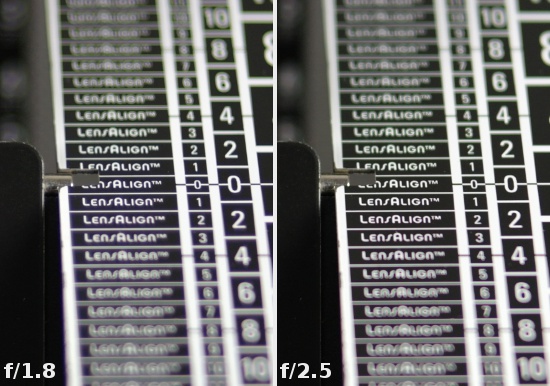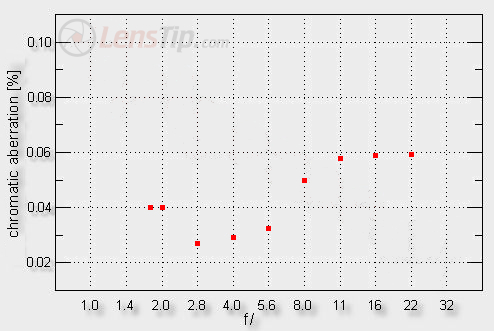Samsung NX 45 mm f/1.8 2D/3D
5. Chromatic and spherical aberration
Chromatic aberration
When it comes to the longitudinal chromatic aberration the lens cannot be praised. At the maximum relative aperture it is pretty distinct and, unfortunately, even after stopping down by 1 EV its influence remains still perceptible.
 |
Please Support UsIf you enjoy our reviews and articles, and you want us to continue our work please, support our website by donating through PayPal. The funds are going to be used for paying our editorial team, renting servers, and equipping our testing studio; only that way we will be able to continue providing you interesting content for free. |
- - - - - - - - - - - - - - - - - - - - - - - - - - - - - - - - - - - - - - - - - - - - - - - -
Luckily the lateral chromatic aberration results are much better – that aberration remains imperceptible at most apertures, never reaching medium levels. The graph below shows that it behaves in an interesting way. Near the maximum relative aperture you get values of 0.04% which can be considered low. By f/2.8-f/5.6 the aberration remains negligible, reaching just 0.03%. Then it increases and gets near 0.05% but still it can be called low.

Spherical aberration
The Samsung 1.8/45 doesn’t correct the spherical aberration in a perfect way. You can notice it looking at the first photo in this chapter, where a slight shift of the depth of field is visible, and also consulting defocused images of light points. The image in front of the focus shows a dark centre surrounded by a lighter rim and behind the focus the situation is reverse.







